Boosting Employee Engagement: Essential Tools for Success
Employee engagement is a multifaceted concept that encompasses the emotional commitment and connection an employee has to their organization. It goes beyond mere job satisfaction; engaged employees are those who are not only content with their roles but are also motivated to contribute to the success of the organization. They exhibit a sense of ownership and pride in their work, which translates into higher productivity and better overall performance.
At ImpactHXM, we recognize that understanding the nuances of employee engagement is crucial for HR and IT leaders aiming to foster a thriving workplace culture. To truly grasp the essence of employee engagement, we must consider the various factors that influence it. These include organizational culture, leadership styles, and the alignment of individual goals with company objectives.
Engaged employees are more likely to advocate for their organization, leading to improved customer satisfaction and retention rates. By prioritizing employee engagement, organizations can create a positive feedback loop where engaged employees drive business success, which in turn fosters even greater engagement.
Key Takeaways
- Employee engagement refers to the emotional commitment and involvement employees have towards their organization.
- Employee engagement is important because it leads to higher productivity, better customer satisfaction, and lower turnover rates.
- Strategies for boosting employee engagement include creating a positive work environment, providing opportunities for growth and development, and promoting work-life balance.
- Communication tools such as employee feedback platforms and regular team meetings can help improve employee engagement.
- Recognition and rewards, as well as training and development opportunities, are important for boosting employee engagement and motivation.
Importance of Employee Engagement
The Benefits of Engaged Employees
Engaged employees are more likely to go above and beyond in their roles, contributing innovative ideas and solutions that propel the organization forward.
A Strategic Imperative for Success
At ImpactHXM, we believe that investing in employee engagement is not just a nice-to-have; it is a strategic imperative for any organization looking to thrive in today’s competitive landscape. Moreover, employee engagement plays a critical role in shaping the overall workplace environment. When employees feel valued and connected to their organization, they are more likely to collaborate effectively with their peers, leading to improved teamwork and communication.
Fostering a Culture of Innovation
This collaborative spirit fosters a culture of innovation, where employees feel empowered to share their ideas and take calculated risks. Ultimately, organizations that prioritize employee engagement are better positioned to adapt to changing market conditions and drive sustainable growth.
Strategies for Boosting Employee Engagement
To effectively boost employee engagement, organizations must implement targeted strategies that resonate with their workforce.
One of the most effective approaches is to cultivate a strong organizational culture that aligns with the values and aspirations of employees.
This involves creating an inclusive environment where diverse perspectives are valued and encouraged.
By fostering a sense of belonging, organizations can enhance employee morale and commitment. Another key strategy is to empower employees through autonomy and responsibility. When employees are given the freedom to make decisions related to their work, they are more likely to feel invested in their roles.
This empowerment can be achieved through flexible work arrangements, opportunities for skill development, and clear pathways for career advancement. At ImpactHXM, we advocate for a holistic approach to employee engagement that encompasses both cultural and structural elements.
Communication Tools for Employee Engagement
| Communication Tool | Features | Benefits |
|---|---|---|
| Send messages, attachments, and links | Widely used, easy to track conversations | |
| Instant Messaging | Real-time chat, file sharing | Quick communication, team collaboration |
| Video Conferencing | Face-to-face meetings, screen sharing | Enhanced communication, remote collaboration |
| Intranet | Company news, document storage | Centralized information, employee engagement |
Effective communication is the backbone of employee engagement. Organizations must leverage modern communication tools to facilitate open dialogue between employees and management. Platforms such as instant messaging apps, video conferencing tools, and collaborative project management software can help bridge communication gaps and foster a sense of community among remote or hybrid teams.
Additionally, regular check-ins and feedback sessions are essential for maintaining engagement levels. By utilizing communication tools that allow for real-time feedback, organizations can ensure that employees feel heard and valued. This two-way communication not only enhances transparency but also builds trust between employees and leadership.
At ImpactHXM, we emphasize the importance of integrating technology into communication strategies to create a more engaged workforce.
Recognition and Rewards for Employee Engagement
Recognition and rewards play a pivotal role in enhancing employee engagement. When employees feel appreciated for their contributions, they are more likely to remain committed to their organization. Implementing a structured recognition program can help organizations celebrate both individual and team achievements, reinforcing a culture of appreciation.
Moreover, rewards should be tailored to meet the diverse needs of employees. While some may value monetary bonuses, others may prefer additional time off or opportunities for professional development. By offering a variety of recognition options, organizations can ensure that all employees feel valued in ways that resonate with them personally.
At ImpactHXM, we advocate for a comprehensive approach to recognition that aligns with the unique motivations of each employee.
Training and Development for Employee Engagement
Empowering Employees through Continuous Learning
Employees who see opportunities for growth within their organization are more likely to stay engaged and committed to their roles. To prioritize continuous learning, organizations should offer workshops, mentorship programs, and access to online courses that align with both individual career goals and organizational objectives.
Soft Skills Development for a Well-Rounded Workforce
Training should not be limited to technical skills alone. Developing soft skills is equally important for fostering a well-rounded workforce. By equipping employees with essential interpersonal skills such as communication, teamwork, and problem-solving, organizations can enhance collaboration and innovation across teams.
Cultivating an Engaged Workforce for Future Success
At ImpactHXM, we believe that a commitment to training and development is essential for cultivating an engaged workforce that is prepared to meet future challenges.
Feedback and Performance Management for Employee Engagement
Feedback is a crucial component of performance management that directly impacts employee engagement levels. Organizations must establish a culture of continuous feedback where employees receive constructive input on their performance regularly rather than solely during annual reviews. This ongoing dialogue allows employees to understand their strengths and areas for improvement while fostering a sense of accountability.
Moreover, performance management systems should be designed to align individual goals with organizational objectives. By setting clear expectations and providing regular feedback on progress, organizations can help employees see how their contributions impact the larger mission. At ImpactHXM, we advocate for performance management practices that prioritize transparency and collaboration, ultimately driving higher levels of engagement.
Measuring and Monitoring Employee Engagement
To effectively enhance employee engagement, organizations must implement robust measurement and monitoring systems. Regularly assessing engagement levels through surveys, focus groups, or one-on-one interviews can provide valuable insights into employee sentiment and areas for improvement. These assessments should be designed to capture both quantitative data (e.g., engagement scores) and qualitative feedback (e.g., open-ended responses).
Additionally, organizations should track engagement metrics over time to identify trends and measure the impact of implemented strategies. By analyzing this data, HR leaders can make informed decisions about where to allocate resources and which initiatives are most effective in driving engagement. At ImpactHXM, we emphasize the importance of data-driven decision-making in fostering an engaged workforce that contributes to organizational success.
In conclusion, employee engagement is a critical driver of organizational success that requires a multifaceted approach encompassing culture, communication, recognition, training, feedback, and measurement. By prioritizing these elements, organizations can create an environment where employees feel valued, motivated, and committed to achieving shared goals. As industry innovators in HR tech and workforce management solutions, ImpactHXM is dedicated to empowering HR and IT leaders with the tools they need to transform their organizations into thriving workplaces where employee engagement flourishes.
Employee engagement tools are essential for creating a positive work environment and boosting productivity.
One related article that delves into the importance of HR technology in transforming businesses can be found <a href='https://impacthxm.
com/transform-your-business-why-hr-technology-is-a-must-now/’>here. This article highlights how leveraging HR technology can streamline processes, improve communication, and ultimately drive employee engagement. By utilizing these tools effectively, businesses can enhance their overall performance and success.
FAQs
What are employee engagement tools?
Employee engagement tools are software or platforms designed to help organizations measure, improve, and maintain high levels of employee engagement. These tools often include features such as surveys, feedback mechanisms, recognition programs, and communication tools.
Why are employee engagement tools important?
Employee engagement tools are important because they help organizations understand and improve the level of engagement and satisfaction among their employees. Engaged employees are more productive, innovative, and loyal, leading to better business outcomes.
What are some common features of employee engagement tools?
Common features of employee engagement tools include employee surveys, pulse surveys, feedback mechanisms, recognition and rewards programs, communication tools, performance management tools, and analytics and reporting capabilities.
How do employee engagement tools benefit organizations?
Employee engagement tools benefit organizations by helping them identify areas for improvement, measure the impact of engagement initiatives, increase employee satisfaction and retention, boost productivity and innovation, and ultimately improve overall business performance.
What are some popular employee engagement tools in the market?
Some popular employee engagement tools in the market include Culture Amp, Glint, TINYpulse, 15Five, Peakon, Officevibe, and Qualtrics EmployeeXM. These tools offer a range of features to help organizations measure and improve employee engagement.







